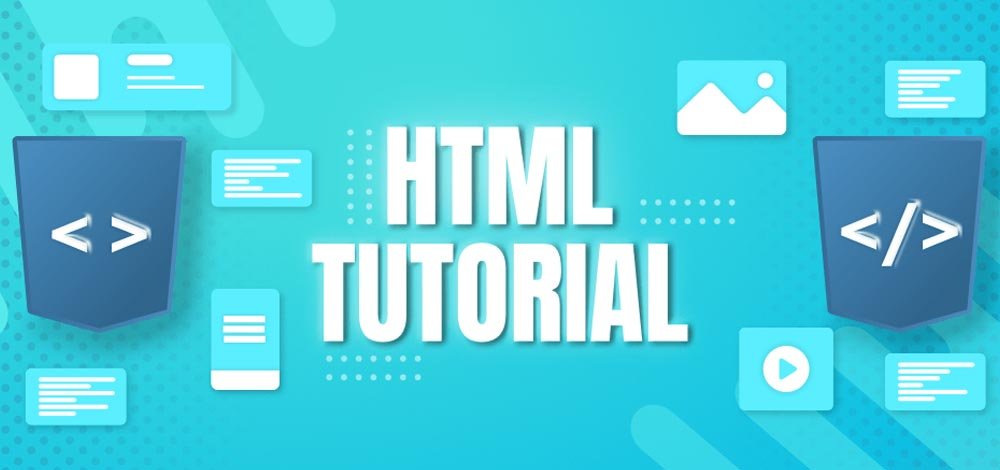HTML5 Overview (HTML Version 5 Overview)
Category: HTML | 1st June 2023, Thursday

HTML5 Is The Latest Version Of The HTML (HyperText Markup Language) Standard Used For Creating Web Pages And Applications. It Was Published By The World Wide Web Consortium (W3C) In October 2014, And It Introduces Several New Features And Improvements Over Its Predecessor, HTML4.
Here's An Overview Of Some Key Features And Improvements Introduced In HTML5:
-
Semantic Elements: HTML5 Introduces New Semantic Elements That Provide More Meaningful Structure To Web Content. These Elements Include
<header>,<nav>,<section>,<article>,<aside>,<footer>, And More. Semantic Elements Make It Easier For Search Engines, Screen Readers, And Developers To Understand The Purpose And Structure Of Different Parts Of A Web Page. -
Multimedia Support: HTML5 Includes Built-in Support For Audio And Video Playback Without The Need For Plugins Like Flash. The
<audio>And<video>Elements Allow Developers To Embed Media Directly Into Web Pages, And With JavaScript, It Becomes Possible To Control Playback, Track Progress, And Add Custom Controls. -
Canvas Element: The
<canvas>Element Introduced In HTML5 Provides A Drawing Surface On Which Developers Can Use JavaScript To Render Graphics, Create Animations, And Build Interactive Applications. The Canvas Element Enables The Development Of Games, Data Visualizations, Image Editing Tools, And More. -
Form Enhancements: HTML5 Enhances The Capabilities Of Web Forms. It Introduces New Input Types Like Email, Url, Date, Number, Range, And More, Allowing Browsers To Provide Better Input Validation And User Experience. Additionally, HTML5 Introduces New Form Elements Like
<datalist>For Creating Auto-suggest Dropdowns And<progress>For Displaying Progress Bars. -
Offline Web Applications: HTML5 Includes A Feature Called "Application Cache" That Allows Web Applications To Work Offline. By Specifying A Manifest File, Developers Can Define Which Resources Should Be Cached By The Browser, Enabling Users To Access And Interact With Web Apps Even When They're Not Connected To The Internet.
-
Geolocation: HTML5 Provides A Geolocation API That Allows Websites To Request The User's Location Information. This Feature Enables Location-based Services, Mapping Applications, And Other Location-aware Web Experiences.
-
Web Storage: HTML5 Introduces The LocalStorage And SessionStorage APIs For Client-side Storage. These APIs Allow Developers To Store Data On The User's Browser, Enabling Persistent Data Storage For Web Applications.
-
Improved Accessibility: HTML5 Includes Various Accessibility Enhancements, Such As Better Support For Screen Readers, Improved Semantics For Easier Navigation, And The Ability To Provide Alternative Text For Multimedia Elements.
These Are Just A Few Highlights Of The Many Features And Improvements Introduced In HTML5. It Has Significantly Advanced Web Development Capabilities And Provided A More Standardized And Powerful Platform For Creating Interactive And Multimedia-rich Web Experiences.
Features Of HTML5
HTML5 Introduces A Wide Range Of Features And Improvements Over Its Predecessor, HTML4.
Here Are Some Notable Features Of HTML5:
-
Semantic Elements: HTML5 Includes New Semantic Elements Such As
<header>,<nav>,<section>,<article>,<aside>, And<footer>. These Elements Provide Better Structure And Meaning To Web Content, Making It Easier For Search Engines And Assistive Technologies To Understand The Page's Organization. -
Multimedia Support: HTML5 Provides Native Support For Audio And Video Playback Without The Need For Plugins Like Flash. The
<audio>And<video>Elements Allow Developers To Embed Media Content Directly Into Web Pages Using Standard HTML Markup. -
Canvas: The
<canvas>Element In HTML5 Allows For Dynamic Rendering Of Graphics And Animations Using JavaScript. It Provides A Drawing Surface Where Developers Can Create And Manipulate Visual Elements, Making It Suitable For Games, Data Visualizations, And Interactive Experiences. -
Scalable Vector Graphics (SVG): HTML5 Introduces Native Support For SVG, Which Allows For The Creation Of Scalable And Resolution-independent Vector Graphics Directly Within HTML Documents. SVG Graphics Can Be Animated, Styled, And Manipulated Using CSS And JavaScript.
-
Form Enhancements: HTML5 Introduces New Input Types And Attributes For Web Forms. Some Examples Include
date,email,number,range,color,url, And More. These Input Types Provide Better User Experience And Enable Browsers To Provide Input Validation And Native Date Pickers, Among Other Features. -
Geolocation: HTML5 Includes A Geolocation API That Enables Websites To Access The User's Location Information (with User Consent). This Feature Allows Developers To Build Location-aware Applications And Services, Such As Mapping, Weather, And Local Search.
-
Offline Web Applications: HTML5 Introduces The Application Cache Feature, Which Allows Developers To Specify Which Files Should Be Cached By The Browser. This Enables Web Applications To Continue Functioning Even When The User Is Offline Or Has A Poor Internet Connection.
-
Web Storage: HTML5 Provides The LocalStorage And SessionStorage APIs, Which Allow Developers To Store Data On The Client-side. This Enables Persistent Storage Of Data Within The User's Browser, Even After The Page Is Closed, Providing An Alternative To Cookies.
-
Web Workers: HTML5 Introduces Web Workers, Which Enable Concurrent Background Processing In Web Applications. Web Workers Allow Time-consuming Tasks To Be Offloaded To Separate Threads, Preventing The Main User Interface Thread From Being Blocked And Enhancing Overall Performance.
-
Accessibility Enhancements: HTML5 Includes Improvements For Accessibility, Such As New Elements And Attributes That Help Create More Accessible Web Content. These Features Contribute To Better Support For Assistive Technologies And Improve The Overall Accessibility Of Web Pages.
These Are Just Some Of The Key Features Of HTML5. HTML5 Has Revolutionized Web Development By Providing A More Robust And Versatile Platform For Creating Modern Web Applications And Rich Multimedia Experiences.
Tags:
Html5 Overview, Html5, Hyper Text Markup Language
